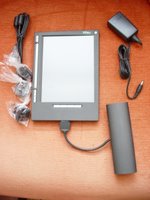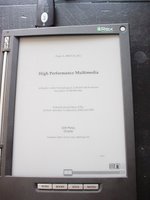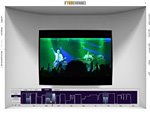 I am in Austria. Yesterday flew from Schiphol to Salzburg. Despite the fact that I was leaving very early, I was able to have a look at the new fuel station at Schiphol Airport. In bright colour travelers are attracted to the booth to load up music and audio-books before they fly. You can put your iPOD, mp3 player, telephone or e-book device to it and tank a song or a book. I am wondering how many people use the service and especially I would like to know the age curve.
I am in Austria. Yesterday flew from Schiphol to Salzburg. Despite the fact that I was leaving very early, I was able to have a look at the new fuel station at Schiphol Airport. In bright colour travelers are attracted to the booth to load up music and audio-books before they fly. You can put your iPOD, mp3 player, telephone or e-book device to it and tank a song or a book. I am wondering how many people use the service and especially I would like to know the age curve.I am in Salzburg where the Europrix Top Talent Award (TTA) Jury is meeting till the end of the week. The Europrix TTA is competition for young professionals up to 30 years aiming at innovative e-Content and alternatives to trash e-Culture. It is the fourth edition of the TTA and when you include the former students’ competition it is the ninth edition.
There have been 316 registrations from 29 European this year. This is lower than the year before and in fact it is the lowest amount of entries in the nine editions. And this news is more distressing, when you realize that many of the entries did not conform to the entry conditions. So only 136 entries will considered for evaluation. In the first analysis it has been concluded already that most of the entries not accepted come from schools. The 29 percent of entries coming from young professionals have all been completed.
So now the 13 man/women jury brigade of 2006 are evaluating the 136 entries. They will have to go through the categories, check the working of the entries and form an opinion about the project. Evaluation criteria are:
1. quality and comprehensiveness of content;
2. ease of use; functionality, navigation and orientation;
3. value added through multimedia;
4. attractiveness of design (aesthetic value or graphics/audio);
5. quality of craftsmanship.
Besides there are two more criteria:
- Strategic score on innovation and creativity;
- for the competition on Music Fusion, there is special score.
 I am not on the jury since two years. Having done a series of jury duties, the organization liked to get new blood in the group. And they got. So there are a few former jury members and completely new ones. There are 13 jury members from 11 countries. And they represent all aspects of interactive media. They are academics, a journalist, two chairpersons of multimedia associations and of course some students.
I am not on the jury since two years. Having done a series of jury duties, the organization liked to get new blood in the group. And they got. So there are a few former jury members and completely new ones. There are 13 jury members from 11 countries. And they represent all aspects of interactive media. They are academics, a journalist, two chairpersons of multimedia associations and of course some students.While they are busy, I will be in meetings about the future of the European Academy of Digital Media (EADiM). Hopefully by the end of the week we will have a new manifesto to act upon.
Tags: Europrix, EADiM, TTA, World Summit Award
Blog Posting Number: 492


































